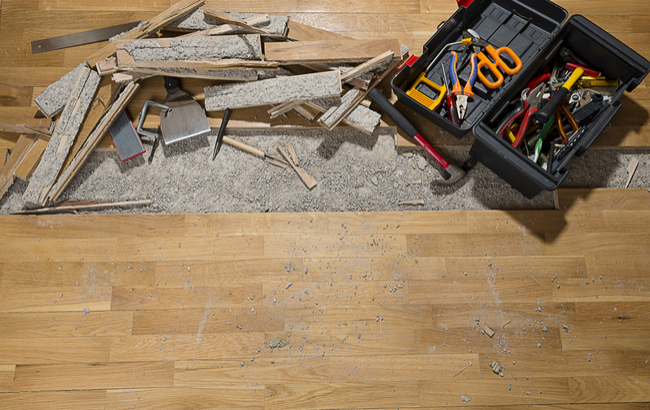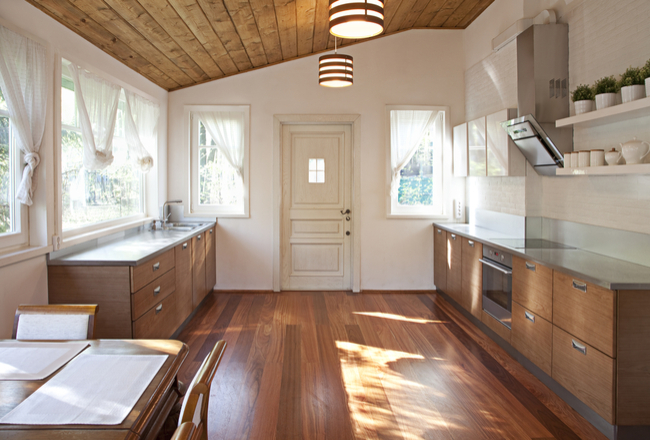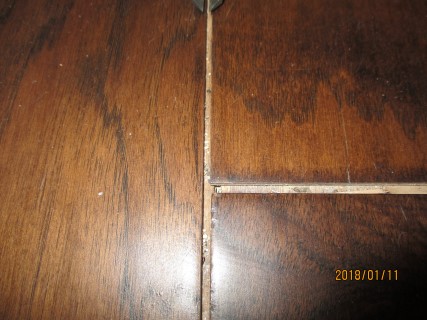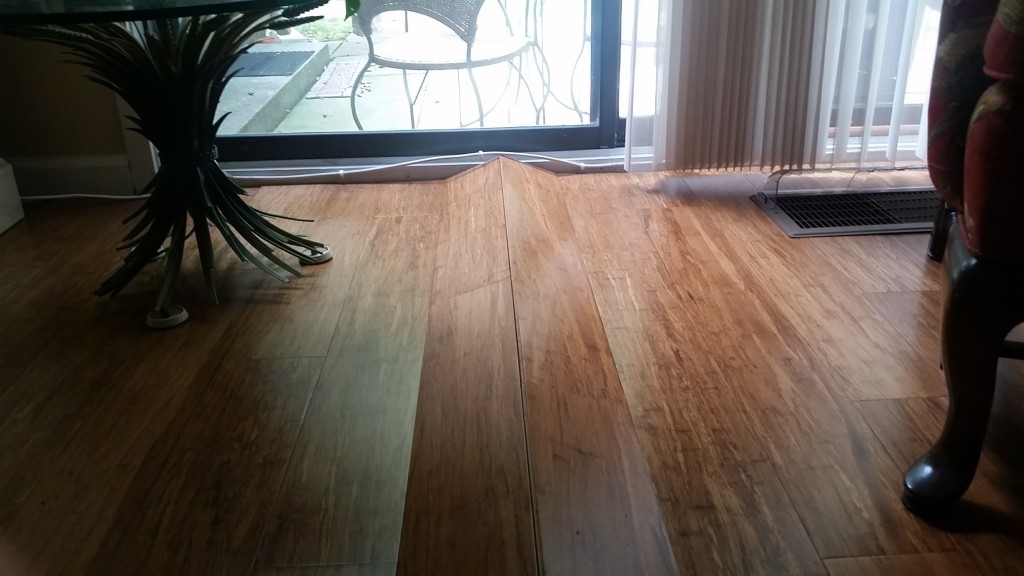13 Wood Flooring Issues and Their Causes
If you watch any home design shows on television, you’ve probably noticed that wood floors are making a comeback. Many a remodeler has pulled up old carpet and discovered — to his or her delight and bewilderment — wood flooring underneath. Cue the familiar lament about why anyone would cover up these beautiful, original hardwood floors with cheap carpet.
Still, as gorgeous and durable as wood flooring can be, it isn’t magical. Like any type of flooring, wood floors have their quirks. Whether you plan on installing new wood floors or refinishing the hardwood that was hiding under your home’s carpet, you need to understand the types of damage and problems that can affect wood flooring.
13 Most Common Wood Flooring Issues
1. Wear and Tear
Wood floors have a protective finish that helps them withstand ample abuse from pets, furniture, kids, and more. Over time, though, this finish will begin to wear off. As it does, you can expect your wood floors to show signs of everyday wear and tear, such as scratches, dings, and dents. You may also notice worn spots that could be caused by high traffic or by a subpar finishing job. Using protective pads under furniture and leaving your shoes at the door can help protect your floors.
2. Pet Stains
Although wood floors are fairly stain resistant, they’re not invincible. Water spills and pet accidents that are left unnoticed for too long will leave a mark. Pet stains, in particular, have a tendency to soak through the finish and into the wood fibers. Unlike surface stains, which can be removed with a wood-floor cleaner, stains in the finish must be sanded out. The deepest stains may even require you to use wood bleach or to replace the affected boards.
3. Sun Fading
Some types of wood are more photosensitive than others, which means they are more likely to be affected by exposure to sunlight. Due to photosensitivity, wood floors may fade and change color over time. A high-quality finish can help delay this process, but if you’re worried about fading, installing blinds to limit sun exposure is also a good idea.
4. Peeling Finish
Although all finishes will eventually show signs of wear, subpar or improperly applied finishes will deteriorate much sooner. If your finish starts to peel off in places, that’s a sure sign that something went wrong during application — and you’ll probably have to sand everything down and start again. Typically, a peeling finish indicates that dirt or chemicals, such as stain residue, were not removed before applying the stain. These contaminants prevent the wood from holding its finish.
5. Wide Gaps
A little separation between boards is fine, but abnormally wide gaps typically indicate improper installation. Wood expands during humid weather and contracts during dry periods, so any gaps in your floors will appear larger during some seasons than others. If boards were excessively wet during installation, the gaps between them will be wider when they dry, causing a cosmetic issue.
6. Cupped Edges
Cupping is a form of water damage. Cupped boards are those whose edges are raised higher than their center. This can happen when wood flooring is installed over a wet subfloor, but high relative humidity can also be the cause. Sometimes floors will flatten out as the excess moisture evaporates, but other cases require sanding.
7. Crowning Edges
Crowning is the inverse of cupping, with the center of a board lifting higher than its edges. Where cupping often results from moisture beneath the boards, crowning tends to happen when water is left sitting on top of the boards. Crowning can also happen when cupped floors are sanded before the moisture is addressed.
8. Buckling Boards
Buckling is the third and most extreme way that wood flooring may react to moisture. When a floor buckles, the boards lift up several inches. Buckling most often results from flooding, but other moisture problems can also cause buckling if the boards were installed too close together and don’t have room to expand, or if the boards were improperly fastened to the floor.
9. Irregular Boards
The contrasting colors of a wood’s grain give your flooring its distinctive look. This variation results from the tree’s growth rings, with the darker spots being soft springwood and the lighter areas being dense latewood. Springwood is less durable than latewood, which means your floor may not wear evenly. Over time, darker areas may look much more worn or dented than the light spots. Irregular boards can also be caused by improper sanding tools or techniques.
10. Scratches From Sanding
Speaking of sanding, you may also notice scratches in your wood flooring that result from improper sanding. These blemishes can be introduced when worn sanding pads or abrasive screens are used to sand the boards between layers of finish. Scratches like these can only be removed by sanding past the layer where they were formed and by refinishing.
11. Cracks From Nails
The concentrated force of a flooring nailer can cause unsightly cracking, especially on factory-finished floors. Some wood species are more prone to cracking than others, and cracking can happen simply because boards dried too quickly. However, nails are the most common culprit. Fortunately, many cracks can be easily fixed with wood filler.
12. Debris in the Finish
Just as scratches can be introduced during the sanding and finishing process, debris can also find its way into the finish. Any pieces of hair, dirt, or other contaminants not removed before finishing — or that come in contact with the finish as it dries — can become a permanent part of the finish. The only way to remove the debris is to resand and refinish.
13. Polyurethane Droplets
If you finish your floors during a change of seasons, uncured polyurethane can seep between the cracks as the boards contract. Later, as the boards expand and force the poly back to the surface, you may notice drops of polyurethane forming along the edges of your floorboards. If you catch them in time, poly drops can be removed easily with a razor blade, a rag, and cleaning solution.
Most wood flooring problems can be avoided with proper installation, finishing, and maintenance, and when they do occur, most problems are very fixable. Except in cases of severe damage, the original boards can usually be repaired and reused without needing to be replaced.
Resources:
https://www.builddirect.com/blog/hardwood-floor-gaps/
https://www.builddirect.com/blog/clean-finish-protect/
https://www.builddirect.com/blog/what-is-photosensitivity-in-wood-flooring/




